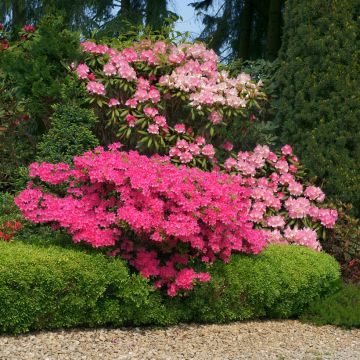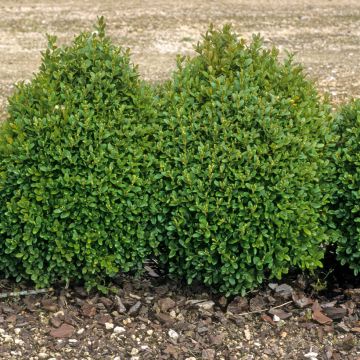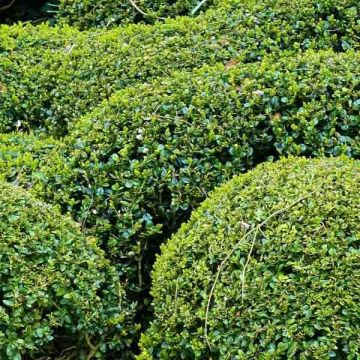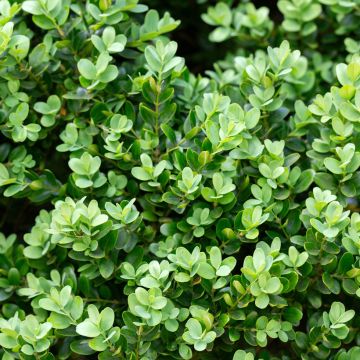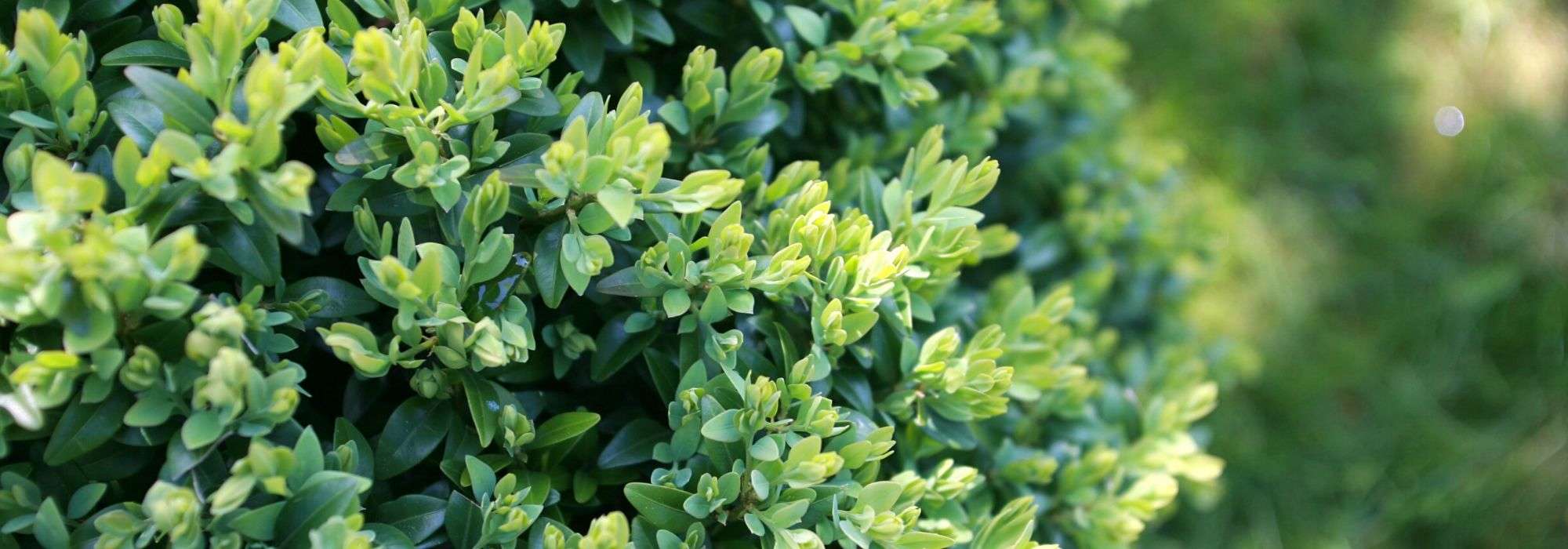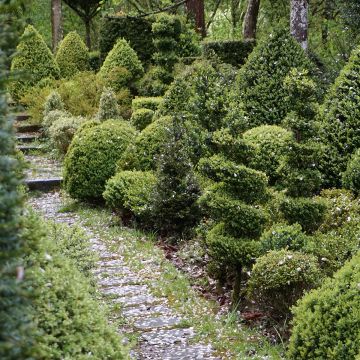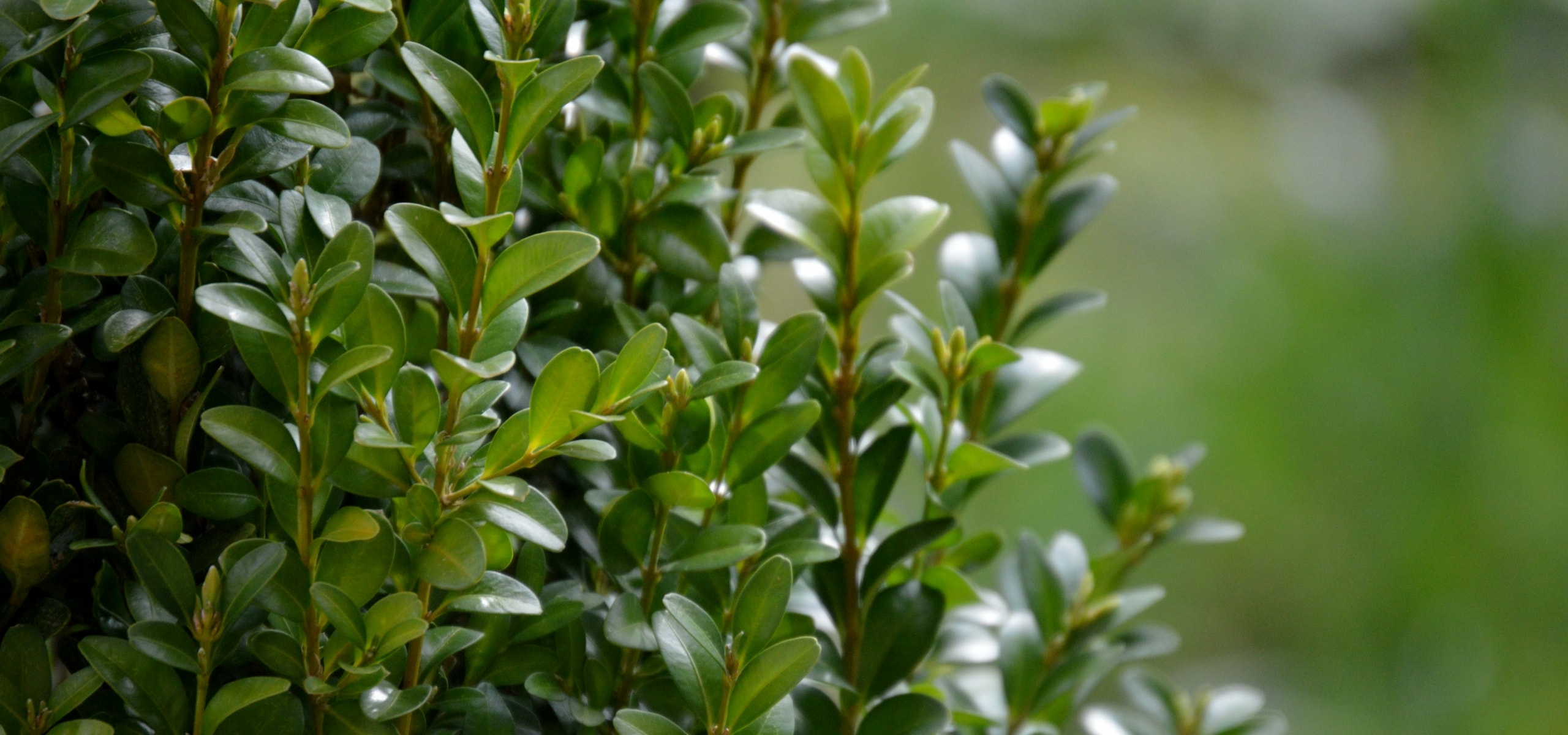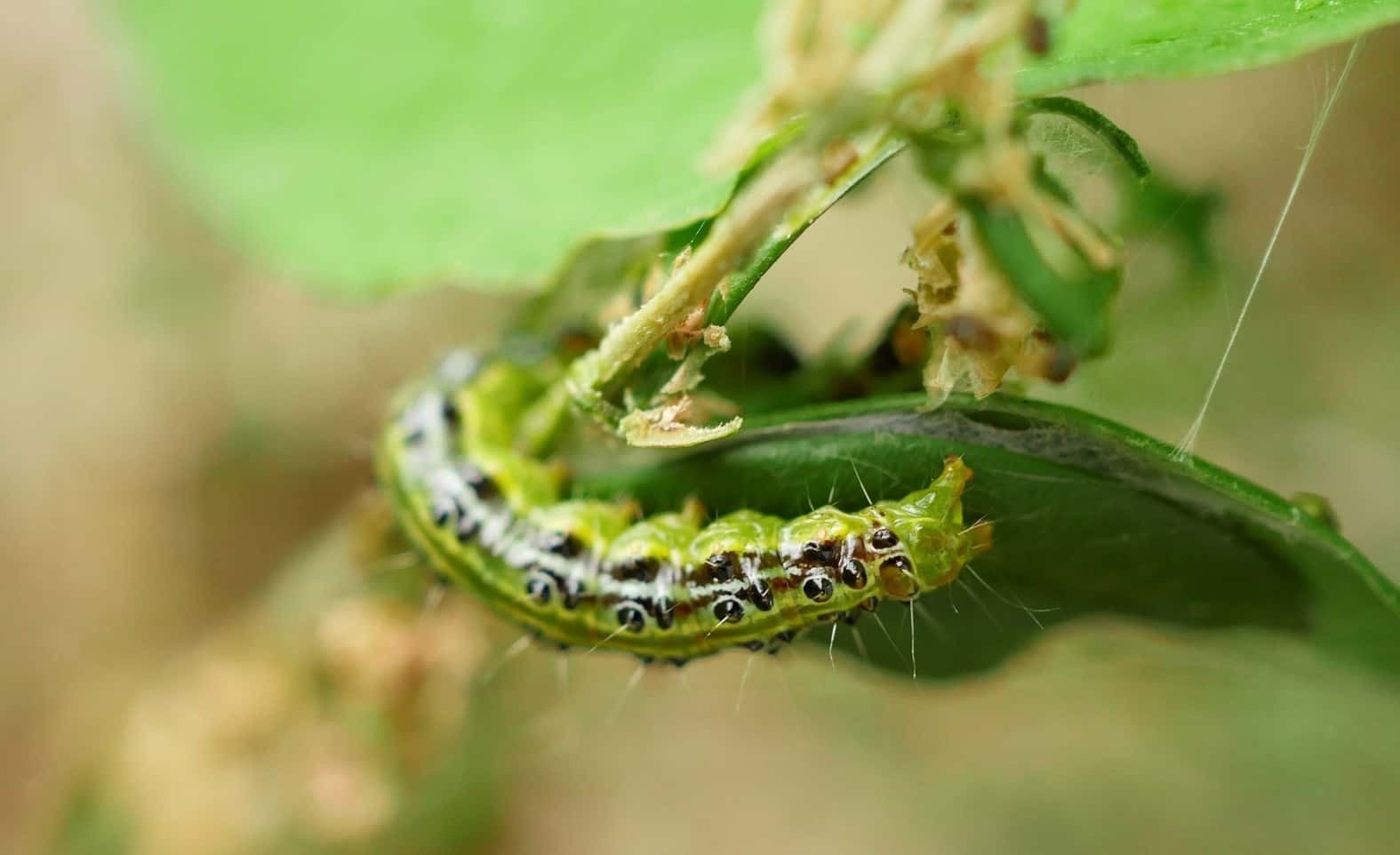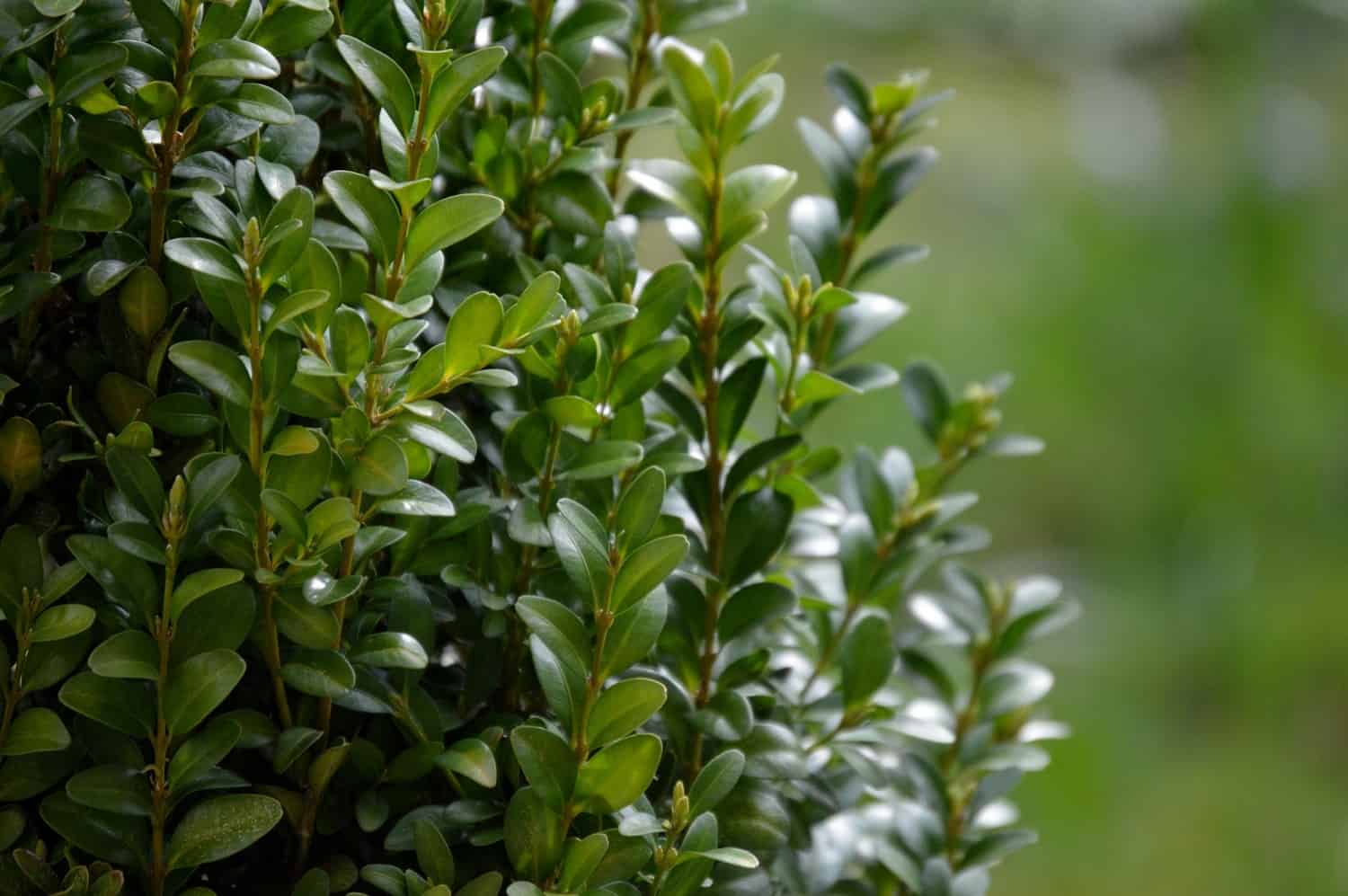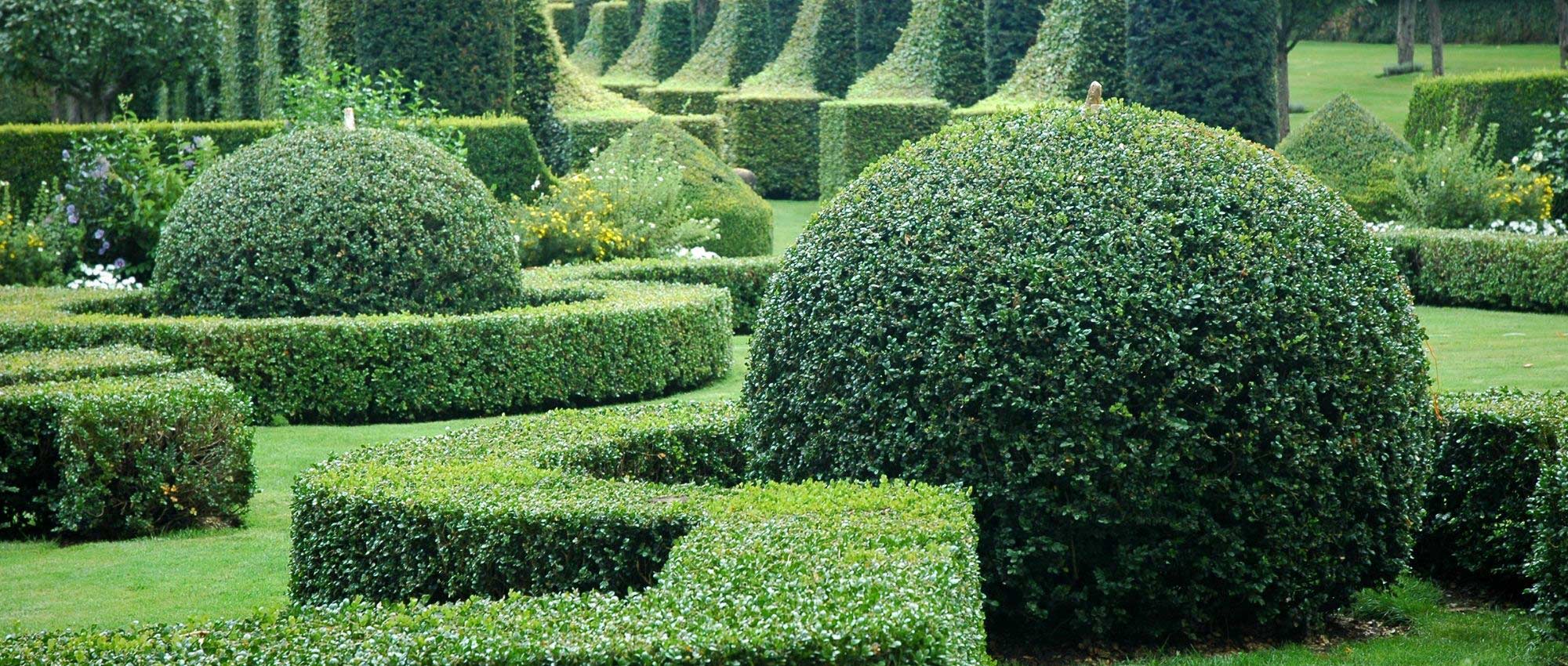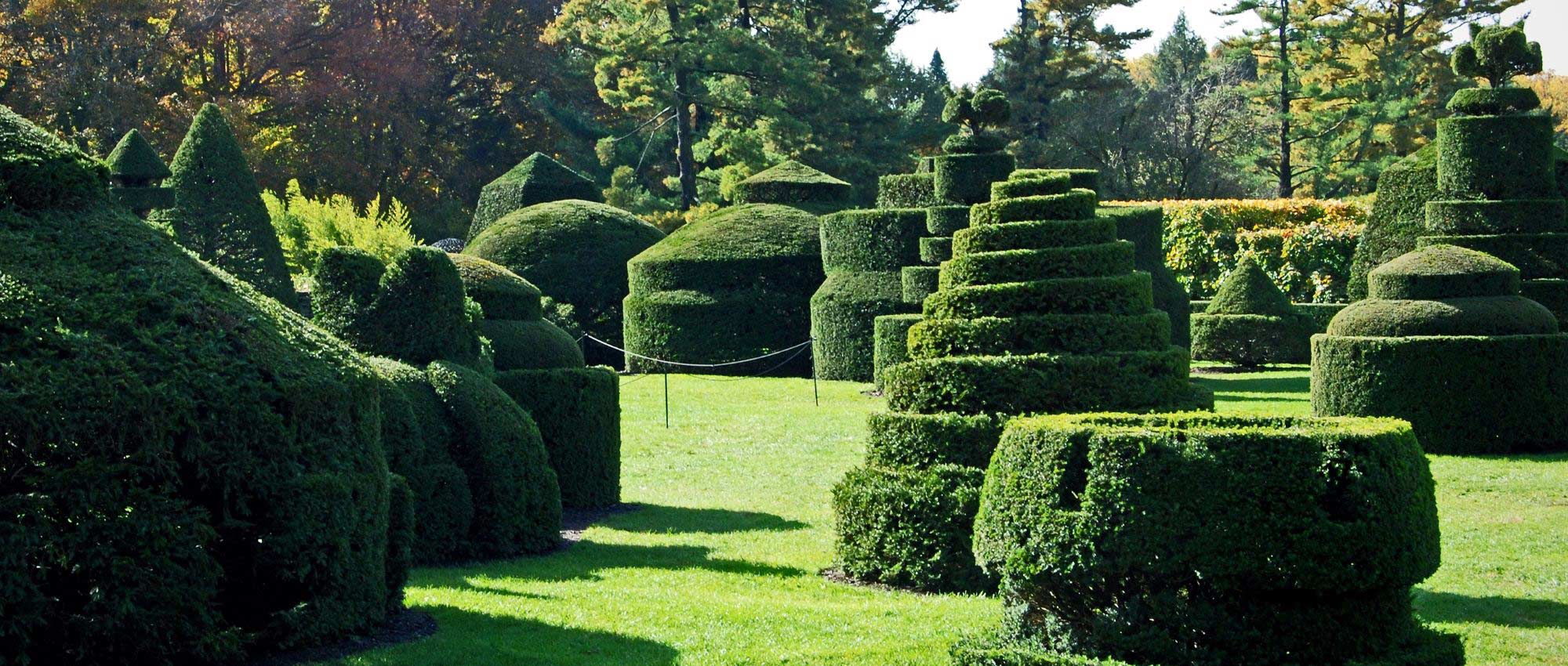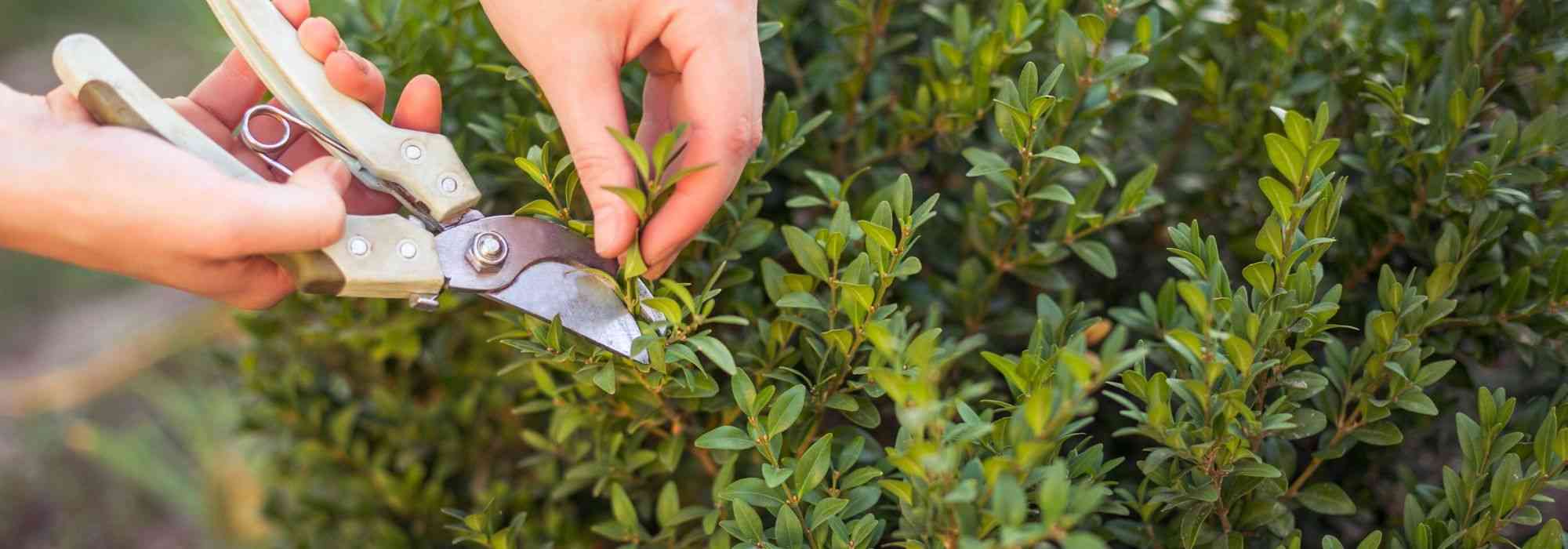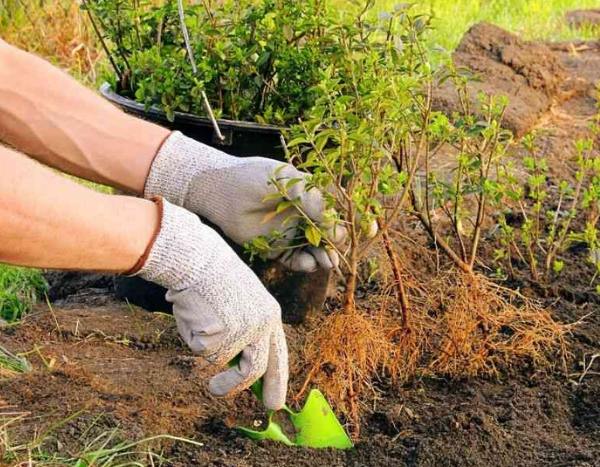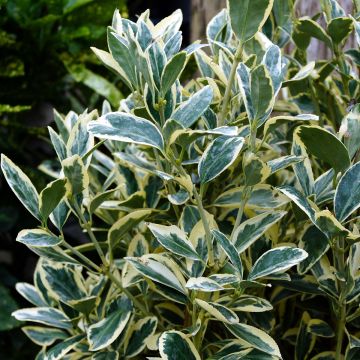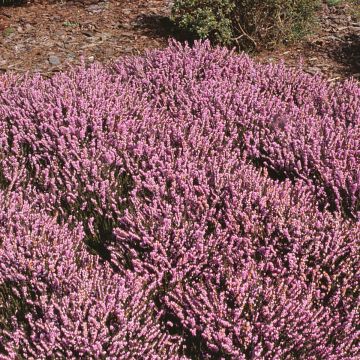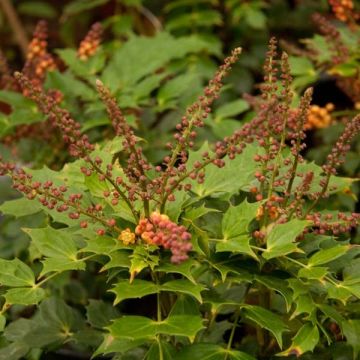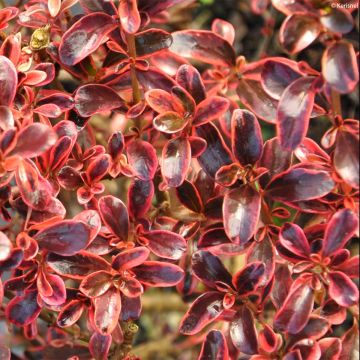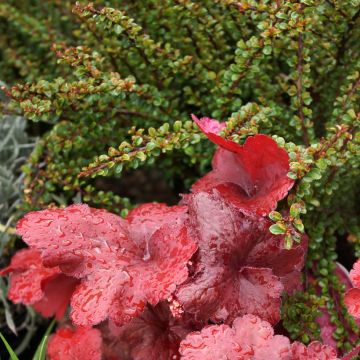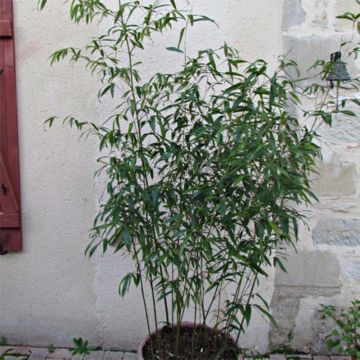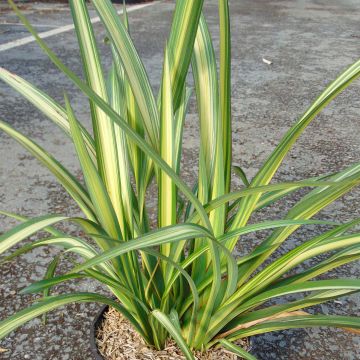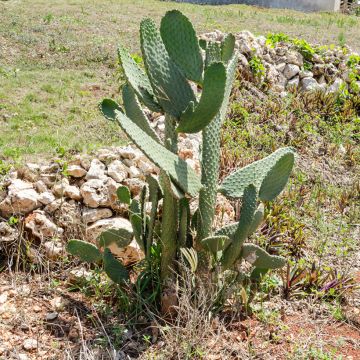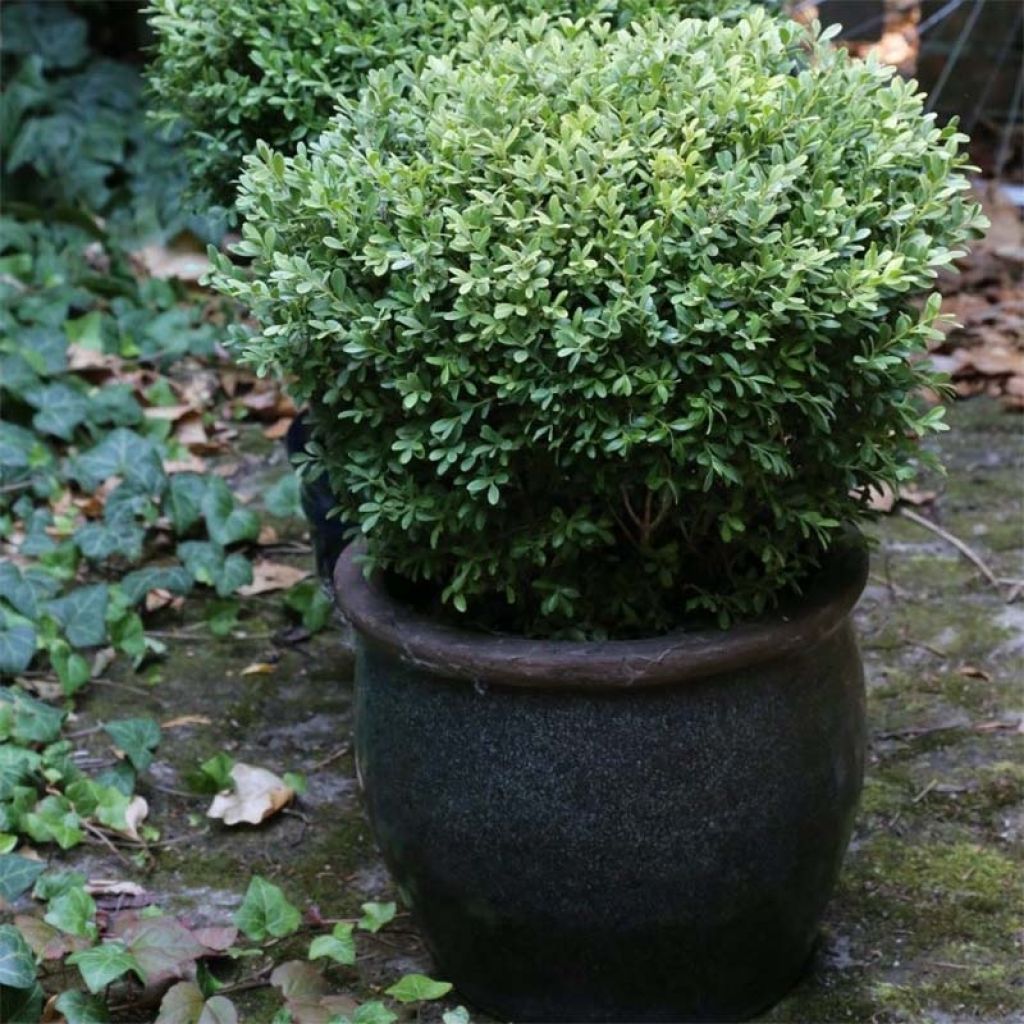

Buxus microphylla Rococo - Boxwood
Buxus microphylla Rococo - Boxwood
Buxus microphylla Rococo
Japanese Box, Small leaf Box, Boxwood
Products of excellent quality, perfectly packaged. I would also add that the website is very well designed.
Dominique, 12/05/2023
Special offer!
Receive a €20 voucher for any order over €90 (excluding delivery costs, credit notes, and plastic-free options)!
1- Add your favorite plants to your cart.
2- Once you have reached €90, confirm your order (you can even choose the delivery date!).
3- As soon as your order is shipped, you will receive an email containing your voucher code, valid for 3 months (90 days).
Your voucher is unique and can only be used once, for any order with a minimum value of €20, excluding delivery costs.
Can be combined with other current offers, non-divisible and non-refundable.
Why not try an alternative variety in stock?
View all →This plant carries a 24 months recovery warranty
More information
We guarantee the quality of our plants for a full growing cycle, and will replace at our expense any plant that fails to recover under normal climatic and planting conditions.

Does this plant fit my garden?
Set up your Plantfit profile →
Description
Buxus microphylla ‘Rococo’ is a variety of dwarf Japanese boxwood with small, rounded evergreen leaves of a fresh and glossy olive green. Its naturally dense, low and spreading habit is particularly suited for creating border or small trimmed hedges. This decorative shrub, a symbol of French gardens and well-maintained mazes, is timelessly classic. Hardy and easy to grow in moderately dry soil, it grows at its own pace, which is slow, but without requiring maintenance. Whether in mixed, free or trimmed hedges, as a free-standing shrub, as a topiary or as a bonsai, it lends itself to all desires!
Buxus microphylla is native to Japan and was introduced to Europe around 1860. Like our common boxwood (Buxus sempervirens), it belongs to the Buxaceae family. The ‘Rococo’ variety, sometimes referred to as B. microphylla ‘Tide Hill’ or ‘Wiertz’, has better resistance to certain fungal diseases. Preferring semi-shade and relatively cool environments, it tolerates dry and chalky soils and responds well to repeated pruning. This extremely dense bushy shrub shows very slow growth, reaching about 1m (3ft 4in) in height and 1.20m (3ft 11in) in width at maturity. Its evergreen foliage, shinier than that of common boxwood, consists of small rounded leaves with a glossy olive green colour. This boxwood is particularly resistant to discoloration during winter frosts. The discreet, nectar-rich and fragrant flowering occurs in clusters of small greenish petals and yellow stamen bouquets in May-June. Each cluster consists of a terminal female flower and several hanging male flowers. This flowering is followed by the formation of small, tough, grey-brown capsules containing numerous ripe seeds in late summer. Their scent attracts ants that disperse them, thus contributing to the plant's multiplication. It is common to see 50-year-old boxwoods in the gardens of family homes, and in very old gardens, individuals over 500 years old can be found.
The ‘Rococo’ boxwood is perfect for creating a low evergreen hedge or an original plant sculpture, if you have patience. It enhances every structure in the garden as well as all neighboring plants. Annual pruning in June allows for abundant and pleasant spring flowering. Boxwood is often used on terraces, in beautiful ceramic or stone pots, and in small gardens for its strong decorative value throughout the year while occupying little space. In herb gardens, it can delineate squares of aromatic plants, different parts of a vegetable garden, or the area reserved for cut flowers. In a slightly wild area of the garden, under large trees for example, it will form beautiful bright bushes all year round, emerging from a carpet of Algerian Bellecour ivy for example.
A legendary tree: boxwood has lemon yellow wood with a very fine grain and is remarkably hard. It is the hardest wood found in the northern hemisphere, second only to ebony, which comes from various species native to the tropical regions of the Old World. As a symbol of immortality, it has been used since antiquity for the quality of its wood: the Greeks and Romans used it to make wax-covered tablets on which they wrote. Highly sought after by turners, engravers, and sculptors, it was also used to make various musical instruments, tool handles, and the mallet of Masonic lodges, where it symbolized firmness and perseverance.
Buxus microphylla Rococo - Boxwood in pictures
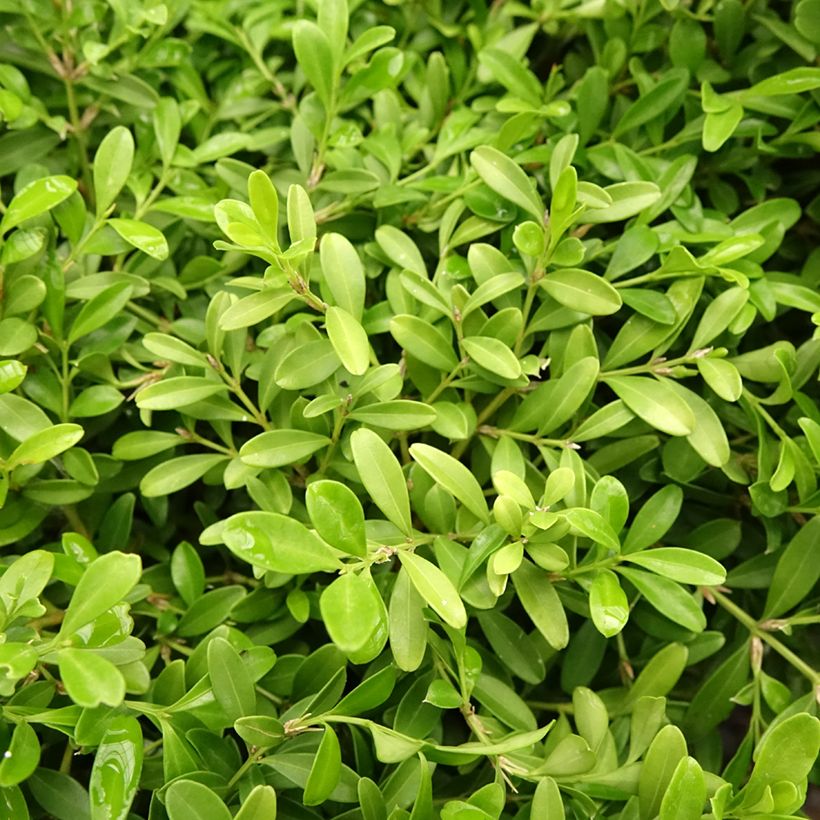

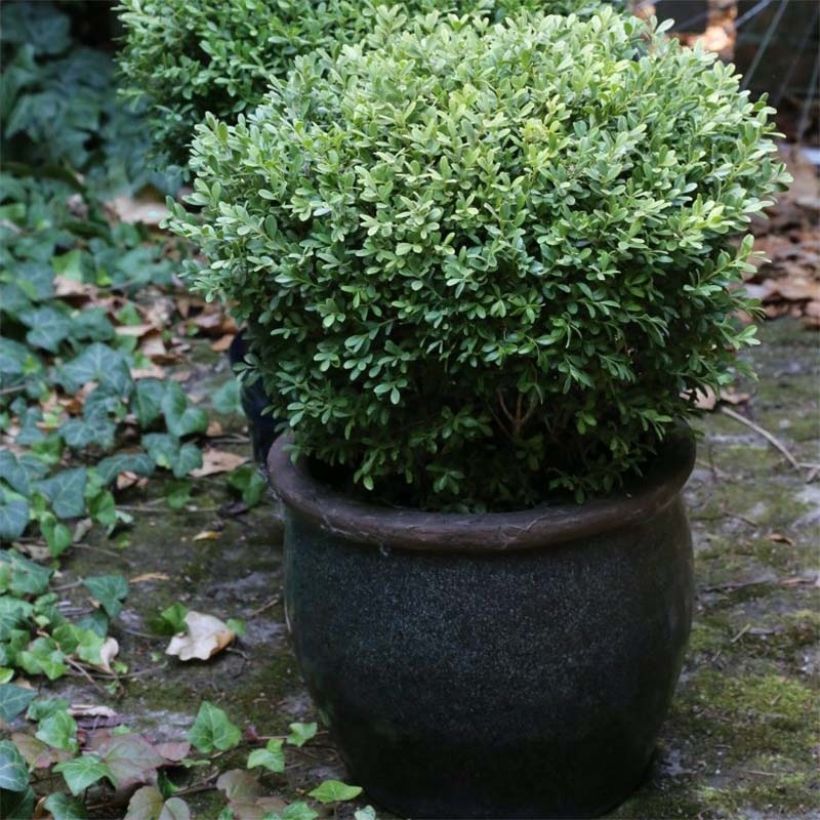

Plant habit
Flowering
Foliage
Botanical data
Buxus
microphylla
Rococo
Buxaceae
Japanese Box, Small leaf Box, Boxwood
Cultivar or hybrid
Other Buxus - Boxwood
View all →Planting and care
Easy to grow, the 'Rococo' boxwood prefers a neutral or slightly calcareous soil, not too dry, but shows great adaptability as evidenced by the diversity of environments it can thrive in. It will thrive in any well-prepared and well-loosened soil, and in all exposures. For pot cultivation, apply rose fertilizer once or twice a year, and protect from very strong and prolonged frosts that can superficially damage the foliage.
Planting period
Intended location
Care
Planting & care advice
-
, onOrder confirmed
Reply from on Promesse de fleurs
Similar products
Haven't found what you were looking for?
Hardiness is the lowest winter temperature a plant can endure without suffering serious damage or even dying. However, hardiness is affected by location (a sheltered area, such as a patio), protection (winter cover) and soil type (hardiness is improved by well-drained soil).

Photo Sharing Terms & Conditions
In order to encourage gardeners to interact and share their experiences, Promesse de fleurs offers various media enabling content to be uploaded onto its Site - in particular via the ‘Photo sharing’ module.
The User agrees to refrain from:
- Posting any content that is illegal, prejudicial, insulting, racist, inciteful to hatred, revisionist, contrary to public decency, that infringes on privacy or on the privacy rights of third parties, in particular the publicity rights of persons and goods, intellectual property rights, or the right to privacy.
- Submitting content on behalf of a third party;
- Impersonate the identity of a third party and/or publish any personal information about a third party;
In general, the User undertakes to refrain from any unethical behaviour.
All Content (in particular text, comments, files, images, photos, videos, creative works, etc.), which may be subject to property or intellectual property rights, image or other private rights, shall remain the property of the User, subject to the limited rights granted by the terms of the licence granted by Promesse de fleurs as stated below. Users are at liberty to publish or not to publish such Content on the Site, notably via the ‘Photo Sharing’ facility, and accept that this Content shall be made public and freely accessible, notably on the Internet.
Users further acknowledge, undertake to have ,and guarantee that they hold all necessary rights and permissions to publish such material on the Site, in particular with regard to the legislation in force pertaining to any privacy, property, intellectual property, image, or contractual rights, or rights of any other nature. By publishing such Content on the Site, Users acknowledge accepting full liability as publishers of the Content within the meaning of the law, and grant Promesse de fleurs, free of charge, an inclusive, worldwide licence for the said Content for the entire duration of its publication, including all reproduction, representation, up/downloading, displaying, performing, transmission, and storage rights.
Users also grant permission for their name to be linked to the Content and accept that this link may not always be made available.
By engaging in posting material, Users consent to their Content becoming automatically accessible on the Internet, in particular on other sites and/or blogs and/or web pages of the Promesse de fleurs site, including in particular social pages and the Promesse de fleurs catalogue.
Users may secure the removal of entrusted content free of charge by issuing a simple request via our contact form.
The flowering period indicated on our website applies to countries and regions located in USDA zone 8 (France, the United Kingdom, Ireland, the Netherlands, etc.)
It will vary according to where you live:
- In zones 9 to 10 (Italy, Spain, Greece, etc.), flowering will occur about 2 to 4 weeks earlier.
- In zones 6 to 7 (Germany, Poland, Slovenia, and lower mountainous regions), flowering will be delayed by 2 to 3 weeks.
- In zone 5 (Central Europe, Scandinavia), blooming will be delayed by 3 to 5 weeks.
In temperate climates, pruning of spring-flowering shrubs (forsythia, spireas, etc.) should be done just after flowering.
Pruning of summer-flowering shrubs (Indian Lilac, Perovskia, etc.) can be done in winter or spring.
In cold regions as well as with frost-sensitive plants, avoid pruning too early when severe frosts may still occur.
The planting period indicated on our website applies to countries and regions located in USDA zone 8 (France, United Kingdom, Ireland, Netherlands).
It will vary according to where you live:
- In Mediterranean zones (Marseille, Madrid, Milan, etc.), autumn and winter are the best planting periods.
- In continental zones (Strasbourg, Munich, Vienna, etc.), delay planting by 2 to 3 weeks in spring and bring it forward by 2 to 4 weeks in autumn.
- In mountainous regions (the Alps, Pyrenees, Carpathians, etc.), it is best to plant in late spring (May-June) or late summer (August-September).
The harvesting period indicated on our website applies to countries and regions in USDA zone 8 (France, England, Ireland, the Netherlands).
In colder areas (Scandinavia, Poland, Austria...) fruit and vegetable harvests are likely to be delayed by 3-4 weeks.
In warmer areas (Italy, Spain, Greece, etc.), harvesting will probably take place earlier, depending on weather conditions.
The sowing periods indicated on our website apply to countries and regions within USDA Zone 8 (France, UK, Ireland, Netherlands).
In colder areas (Scandinavia, Poland, Austria...), delay any outdoor sowing by 3-4 weeks, or sow under glass.
In warmer climes (Italy, Spain, Greece, etc.), bring outdoor sowing forward by a few weeks.






























